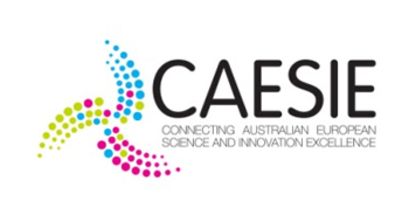Background
Australia and the EU have a strong record of science and research collaboration. Australia was the first industrialised country to sign a treaty-level science and technology agreement with the EU in 1994. The Joint Science and Technology Cooperation Committee (JSTCC) established under this Agreement meets approximately every two years to exchange information and to discuss ways to enhance science and research collaboration between Australia and the European Union. CAESIE built on the EU projects Access4EU und FEAST, which contributed to the S&T collaboration between Australia and Europe.
Objectives
The project specifically aimed to enhance science and technology collaborations between SMEs and researchers making a significant contribution to addressing some of the world’s grand challenges: clean energy, healthy ageing, and sustainable cities.
Three strategies were pursued:
- Improved communication and connection between Australian and European actors in research and innovation;
- Focus on joint priority topics;
- Continuation of the measures of the ACCESS4EU und FEAST projects.
Activities
- CAESIE provided free assistance and brokerage to establish early stage collaborative links between researchers and SMEs in Australia and Europe, for knowledge exchange and research and development (R&D) product development.
- The project funded support through Priming Grants for initial contacts between researchers and SMEs.
- CAESIE provideded assistance with identifying government-funded programmes and incentives in Australia and Europe for major project development and other opportunities for research and innovation.
- CAESIE also explored Australian cooperation in research activities coordinated or networked among European Union Member States.
- CAESIE assisted EU Member States in identifying opportunities to align programmes and policies vis-àvis Australia, and for exploring ERA-NET type of activities for joint research and innovation projects.
- CAESIE established an innovation policy forum between Australia and Europe to promote information-sharing and mutual learning in areas such as access to capital, intellectual property rights (IPR), innovation metrics, social innovation and government procurement practices.
- CAESIE expandrd The National Contact Point (NCP) network within Australia significantly to include individuals with suitable subject expertise drawn from across Australia.
- Information days and workshops were organised to bring Australian programme managers, industry representatives and scientists to Europe in order to inform multipliers, SMEs and interested scientists about open programmes and cooperation potentials in Australia.
- CAESIE monitored Australian involvement in FP7. The ACCESS4 EU database was extended to include European research and innovation programmes which were open to Australian applicants and vice versa.
- CAESIE shared information and mutual learning from projects being undertaken in the EU on innovation metrics and fast growing innovative companies.
The project website disseminated information about the Australian and EU research and innovation relationship and bilateral activities. This activity was supported by a linked-in group as well as information events in Australia and Europe.
Project Partners
Partners in this project included leading organisations with relationships to Australia and Europe:
- DLR Project Management Agency, Department 'European and International Cooperation' (German Aerospace Center)
- Australian Department of Innovation, Industry, Climate Change, Science, Research and Tertiary Education (DIICCSRTE)
- Australian Academy of Technological Sciences and Engineering
- Australasian Industrial Research Group
- International Bureau of the German Federal Ministry of Education and Research (BMBF)
- The Fraunhofer-Gesellschaft zur Förderung der angewandten Forschung e.V., FhG, (Fraunhofer Institute for Manufacturing Engineering and Automation IPA), and
- VTT Technical Research Centre in Finland.








